How to Craft Your Protagonist’s Inner and Outer Journeys
Your protagonist is your most important character…
Not only are they the central figure of your novel, but they’re also the main agent of change in your story. They’ll progress your plot, grow and evolve, and eventually resolve your core conflict. Most importantly, they’ll be your readers’ avatar, and are who people will think of first when they reflect on your novel.
The question is, how can you write a protagonist readers will actually want to remember? With so many roles attached to them, it’s no wonder that this process involves a lot of pressure. Fortunately, the answer isn’t as complicated as you might think! You simply need to leverage two key journeys: your hero’s inner journey, and their outer journey.
The Two Sides of Your Protagonist’s Story
Contents
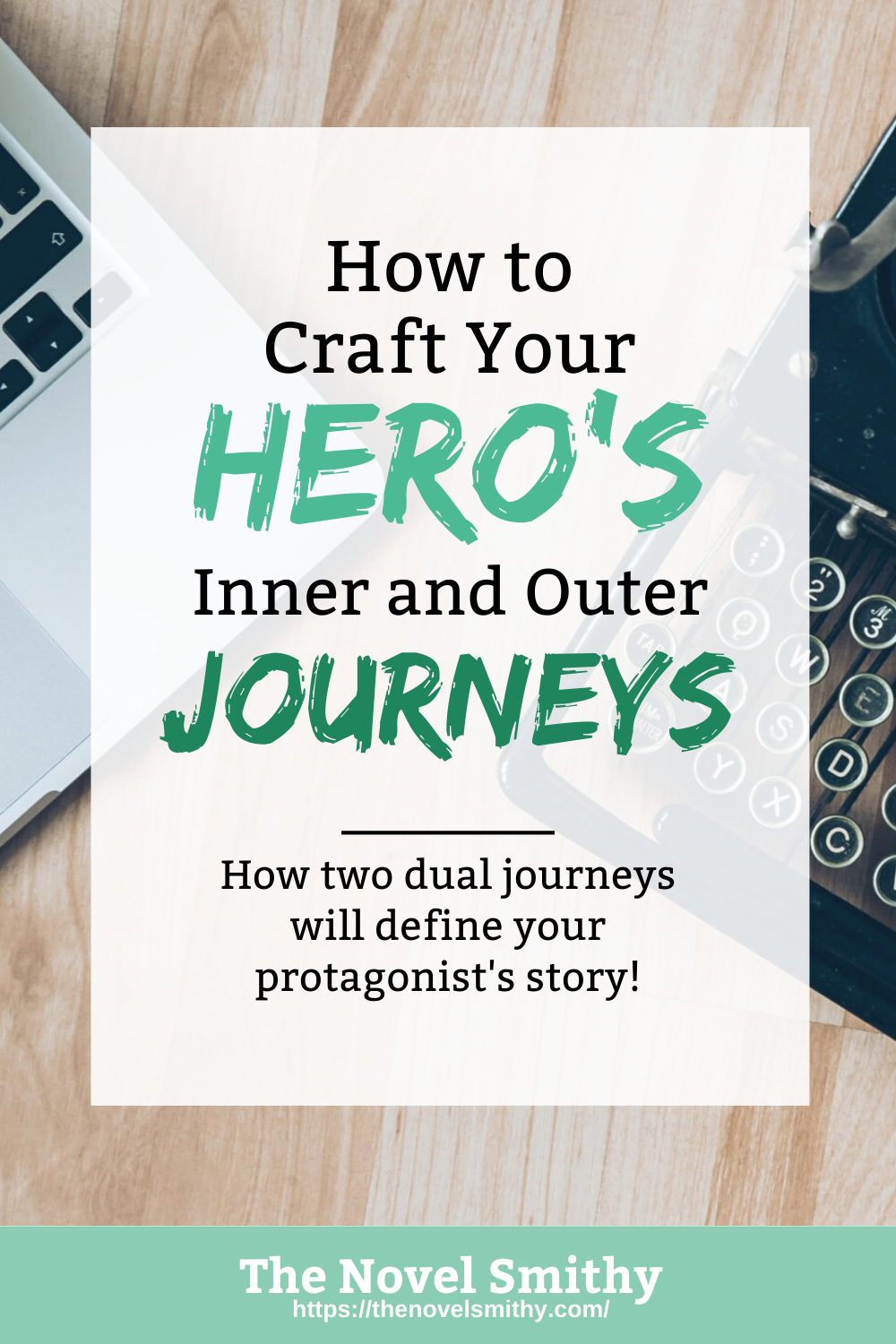 When many writers first begin creating their protagonist, they often focus on only half of the equation. For instance, they might dive deep into their hero’s character, personality, and desires—or maybe they’ll get wrapped up in their plot, external conflicts, and physical challenges.
When many writers first begin creating their protagonist, they often focus on only half of the equation. For instance, they might dive deep into their hero’s character, personality, and desires—or maybe they’ll get wrapped up in their plot, external conflicts, and physical challenges.
Unfortunately, this presents a problem.
To write a fan-favorite protagonist, you need to balance both their character development, and your plot—and then weave those sides together into a single, cohesive story. Even in seemingly quiet stories with little physical conflict, your plot is still a critical part of keeping readers engaged. Likewise, even in novels that are all about explosions and frantic car chases, your protagonist still needs a meaningful internal life too.
This is something I explore extensively in my book, Write Your Hero. Essentially, there are two sides to your protagonist’s story:
The Inner Journey: A compelling inner life, where your protagonist faces internal struggles and obstacles that leave them meaningfully different by the end of your novel.
The Outer Journey: And an engaging outer conflict, where your hero fights against external challenges in pursuit of some larger goal.
It’s these dual journeys that will form your protagonist’s foundation, thus encouraging the kind of deeply connected story that keeps readers flipping pages. This is how you can write a novel with a seemingly bland protagonist—at least on the surface—and yet still inspire the kind of fierce loyalty typically associated with someone’s favorite superhero!
So, let’s take a moment to explore how these dual journeys play out, and how they might apply to your own protagonist…
The Inner Journey vs. the Outer Journey
The Inner Journey – Character Development:
First up, your protagonist’s inner journey is the internal transformation they experience as a result of your story. This is built from a few basic components:
Their Inner Struggle: A harmful belief your protagonist suffers from that holds them back from achieving their goals, as well as from completing their inner journey.
Their Truth: The lesson your hero needs to learn in order to overcome their inner struggle. Accepting this truth is the final test of their inner journey.
Their Identity: How your protagonist perceives themselves and their place in the world around them, as well as how other characters perceive them.
Their Backstory: The key experiences that define your hero’s life. These events will typically be the source of their inner struggle, as well as their identity.
Their Character Arc: The specific internal transformation of your protagonist, either positive, negative, or flat.
Just like your hero will face physical hurdles and obstacles throughout your plot, they’ll also face challenges within themselves. These inner conflicts can manifest as anything, from the fight to let go of harmful beliefs to the slow process of accepting their own differences.
Whatever your protagonist’s personal struggles are, it’s this inner journey that will not only change them as a person, but also allow them to succeed in your plot.
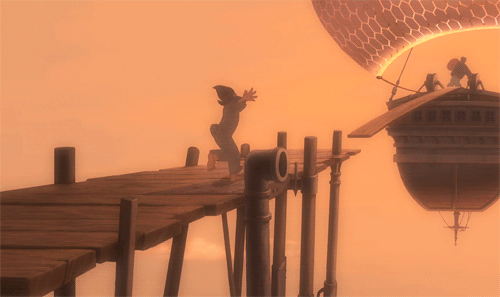
For instance, Jim Hawkins from Disney’s Treasure Planet struggles against a deep anger over his father’s abandonment. His inner journey is about learning to let go of that anger and accept that he has the power to choose his own family. Only by embracing this truth does he ultimately find the strength to save his crew and thus resolve the plot of his story.
For more on each of these elements, check out these articles:
- Inner Struggle: The Foundation of Compelling Character Arcs
- The Truth: How to Complete Your Protagonist’s Character Arc
- 4 Ways to Discover Your Protagonist’s Identity
- Character Backstory: Three Steps for a More Balanced Approach
- Character Arcs 101: Positive and Negative Arcs
The Outer Journey – Plot:
Alongside your hero’s inner journey, they’ll also experience a corresponding outer journey.
This is the external side of their story, involving physical challenges, obstacles, and conflicts between them and the world around them. Just like the inner journey, this is built from a few specific things:
Their Want: A subconscious desire or goal that represents your protagonist’s inner struggle.
Their Need: The action or choice your hero must make in order to prove their growth as a character and complete their outer journey.
Your Core Conflict: Also called your central conflict. This is the primary challenge, threat, or obstacle that defines your plot.
Your Story’s Stakes: The consequences your hero will face if they fail in their quest. These stakes should be personally relevant to your protagonist’s life and clear to your readers.
Your Story’s Structure: The specific set of story beats that combine to form your novel’s plot. A popular example would be the Three Act Structure.
Basically, your protagonist will start their adventure with some kind of subconscious goal or desire that stems from their inner struggle. This “want” will encourage them to make certain choices in your plot, getting them into trouble and embroiling them in your novel’s conflict.
Luckily, as their story unfolds, their true need will come into view, allowing them to resolve your plot and eventually complete their quest!
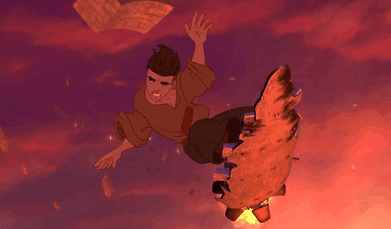
Returning to Jim Hawkins from Treasure Planet, his want is to prove himself. This pushes him to set out in search of Treasure Planet, sparking the wild adventures and conflicts that dominate his story. However, the desire to prove himself isn’t what allows him to resolve the plot of his movie. Instead, it’s only by fulfilling his need—to let go of the treasure and put his newfound family first—that he ultimately succeeds in both saving his crew and proving himself a hero.
For more on each of these elements, check out these articles:
- Want Versus Need: the Secret to Character Conflict
- The Two Types of Conflict Every Novel Needs
- 4 Tricks for Raising the Stakes of Your Story
- 4 Key Crossroads Your Protagonist Must Face
- The Complete Story Structure Series
How These Dual Journeys Combine
With all that said, the real value of these dual journeys is found when you combine them!
You see, your protagonist doesn’t just undergo an inner journey and an outer journey—instead, they undergo both of these journeys in unison, with each one influencing the other. Their inner struggle and want are just two sides of one coin, and the same is true for their truth and need.
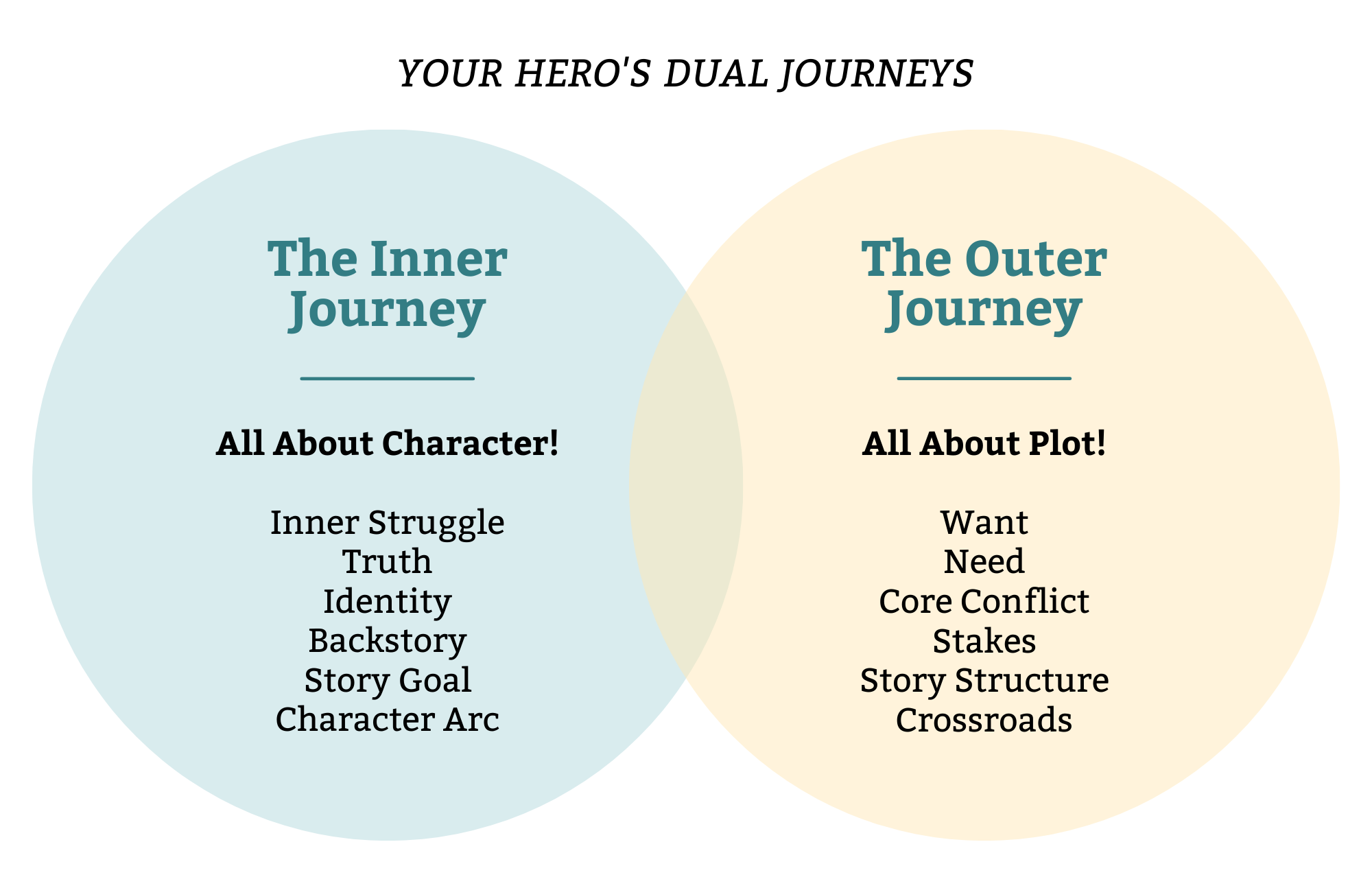
Think of it this way: your protagonist begins their story suffering from a deep inner struggle, and thus pursuing a misguided want. As they get embroiled in the conflict of your novel, they’ll face obstacles and challenges that teach them important lessons, thus revealing their truth. Slowly but surely, they’ll begin to accept this truth or reject it (in the case of a negative arc). Finally, after they embrace their truth fully, they’ll get the chance to act on it, fulfilling their need and resolving the conflict of their story!
Surrounding these major elements are all the smaller pieces we’ve discussed.
Their backstory and identity lend realism and color to who they are, while a clear set of stakes ensure your core conflict feels pressing and important. Meanwhile, your hero’s character arc helps you weave all the pieces of their inner journey together—while your story’s structure does the same for their outer journey.
Ultimately, each of these dual journeys feeds the other, resulting in a story that’s tightly woven around your protagonist!
Crafting Your Hero’s Inner and Outer Journey
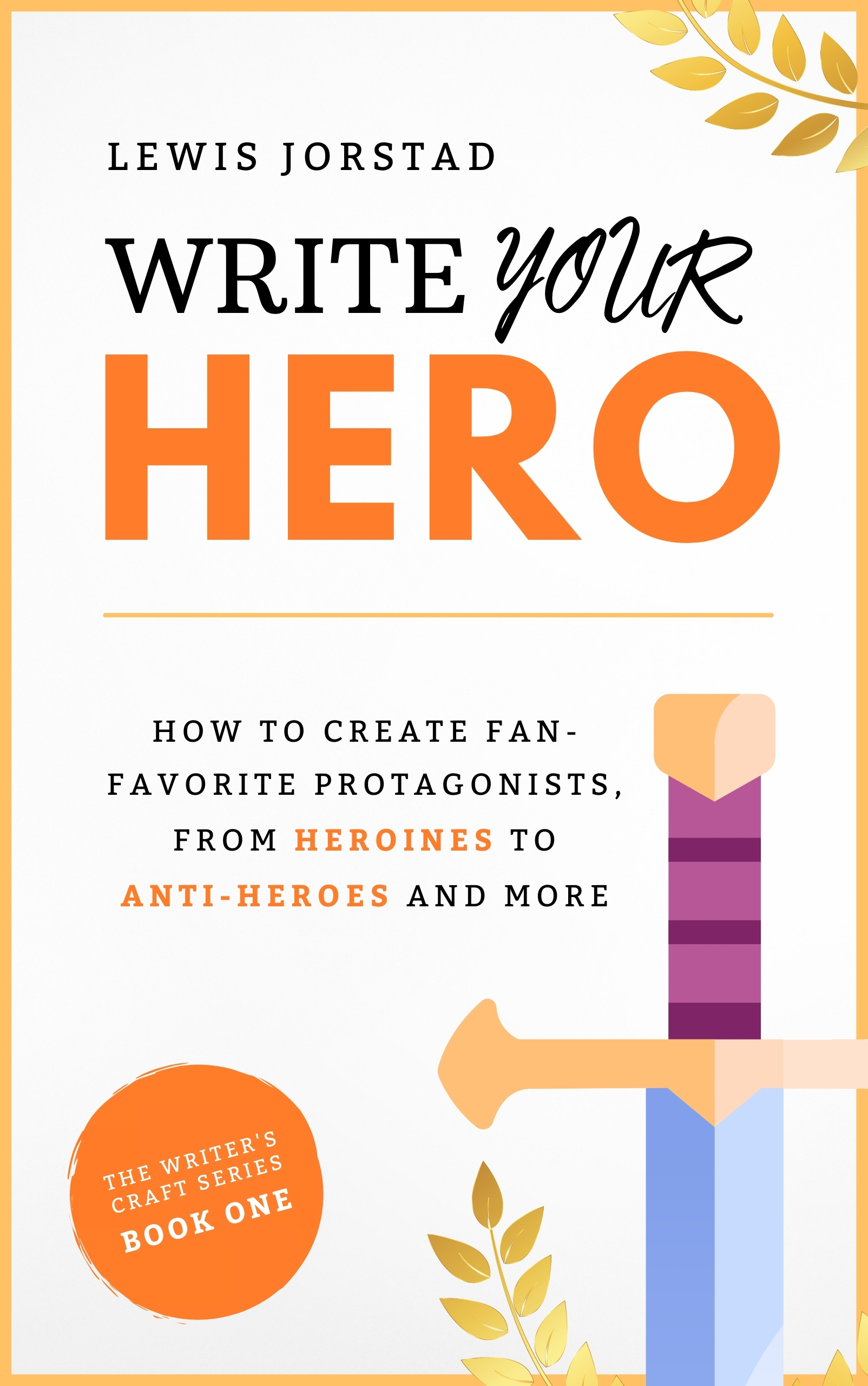 At the end of the day, readers want to see their favorite characters earn their victories, and part of that involves watching those characters grow as people. The struggles your protagonist faces throughout their story will play a major role in satisfying that desire. Your readers are rooting for your hero, and as that hero fails, learns, and slowly starts to succeed, they’ll become even more invested in their adventure.
At the end of the day, readers want to see their favorite characters earn their victories, and part of that involves watching those characters grow as people. The struggles your protagonist faces throughout their story will play a major role in satisfying that desire. Your readers are rooting for your hero, and as that hero fails, learns, and slowly starts to succeed, they’ll become even more invested in their adventure.
Luckily, these two journeys will go a long way in helping you craft a satisfying story for your protagonist!
Whether you’re writing a traditional hero, a heroine, anti-hero, or even multiple heroes, their inner and outer journeys will play a major role in ensuring they deserve the title of “protagonist.” After all, your protagonist is your most important character.
If you want your novel to truly shine, you need to make their story (and thus these dual journeys) count. 🙂


Hi, I just found your teachings. I feel like I’ve been looking for you a long time! Thank you!
Welcome Gena! 😁